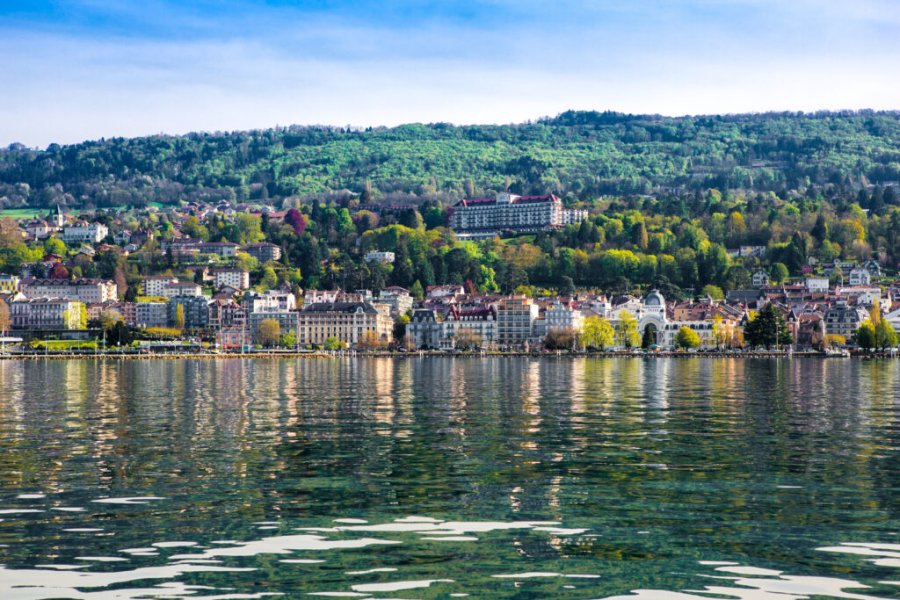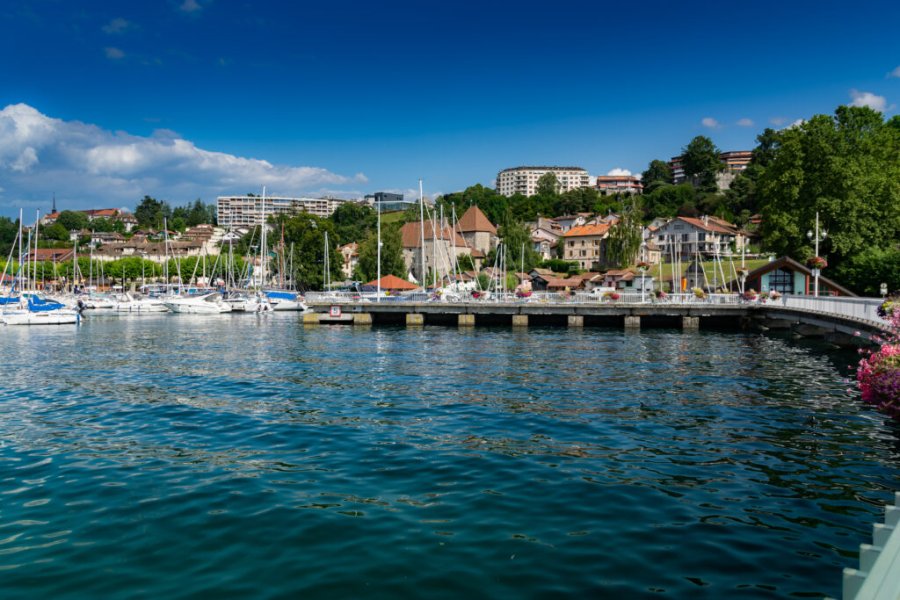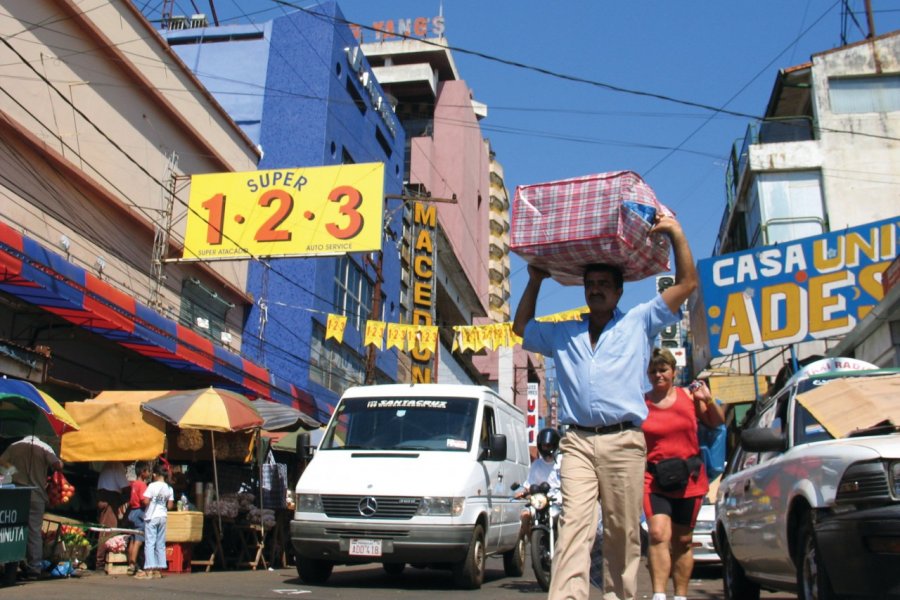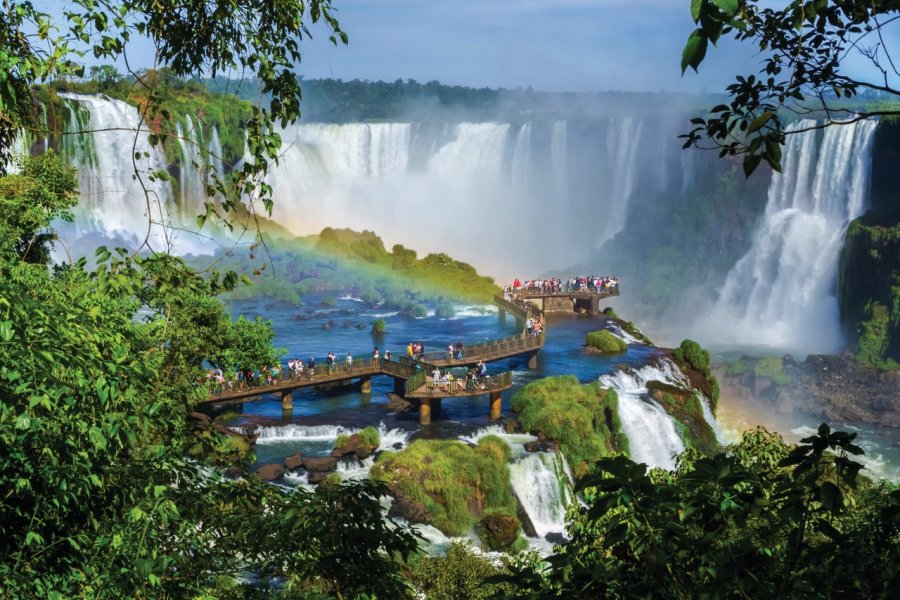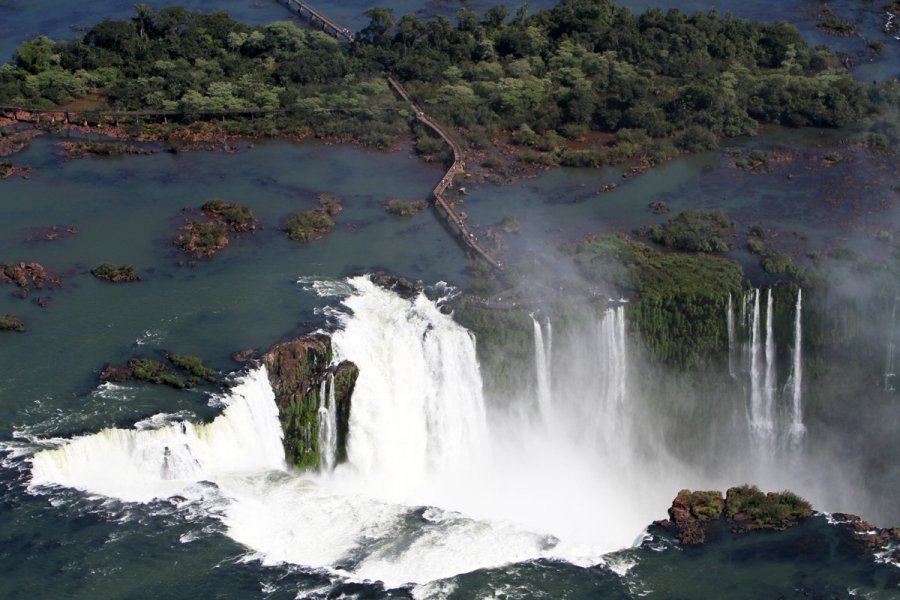Travel Guide Chutes d'Iguazu
Even the most jaded will be in awe! It is the counterpart in Latin America of the Victoria Falls in Southern Africa. In the northeast of Argentina, in the province of Misiones, on the border with Brazil, the Iguazú River forms gigantic waterfalls. A marvel of nature classified as a World Heritage Site by UNESCO, it is best to discover it on the Argentine side. These spectacular waterfalls are located at 80% on the Argentine territory, at 20% in Brazil. On each side, the environment is protected by national parks, the National Park of Iguazú in Argentina and the National Park of Iguaçu in Brazil. This aquatic enchantment of a width of 2,7 km, with 275 cascades of which the most impressive is the Garganta del Diablo,in U shape, extends on 700 m length, 150 m broad and exceeds 80 m height. This aquatic enchantment in its vegetal setting can be discovered on foot from the footbridges, by small tourist train, by bus, by boat, by two-wheelers... On the paths of the national park of Iguazú, you will have the opportunity to observe coatis, exotic birds including toucans in flight, agoutis in flight and to hear howler monkeys if you don't see them. Here is a destination where you will really enjoy and take in the sights. And even if the site is very touristic, the infrastructures are well integrated and the preservation of the environment remains the priority. Don't forget your tourist guide!
When to go to en Chutes d'Iguazu?
When to go to Iguazú Falls? Argentina is located in the southern hemisphere where spring runs from the end of September to the end of December, followed by summer until the end of March, fall until the end of June and winter until the end of September. The high tourist season is in July. Be careful at certain times of the year, such as during the Semana Santa, which precedes Easter, when Argentines are on vacation and hotels are full. The month of January corresponds to the Argentinean vacations, so remember to make your accommodation reservations.
In Mesopotamia and Misiones, rainfall is constant, even more so from December to March, and the summer is particularly hot. July is the best season to visit the Iguazú Falls. But it is the high tourist season and the prices go up. In the northwest, temperatures rise to over 40°C in summer. To be avoided! The wet season is between November and March, it is the Andean winter. Buenos Aires and the pampas are sheltered from heavy rains and enjoy a moderate climate, although more humid in the capital and on the coast. Although the temperatures are pleasant, January and February can be very humid.
Weather at the moment
The climate, generally humid subtropical, varies from one region to another in this country stretched, from north to south, over 3,700 km. In the northeast, in the region of the Iguazú Falls, the climate is almost tropical with mild, dry, sometimes cool winters and hot, humid summers. Rainfall reaches 2,500 mm per year in the jungle of Misiones.
Buenos Aires
The currency is the Argentine peso. Beware, counterfeit bills are circulating. The peso has a high inflation. The country is a cheap destination. It is customary to leave a tip of 10% of the bill. Credit cards are generally accepted, but if you pay in cash, you will get a 10-20% discount. There is a charge for the Iguazú Falls tour (50% off for day 2). You will find cheap hotels in Porto Iguazú.
European Community citizens do not need a visa to enter Argentina. A valid passport (at least, still valid for six months on the date of travel). A three-month residence permit will be stamped in your passport (it is free). To renew your residence permit, the easiest way is to leave the country and re-enter to get a new stamp for three months. The most common way is to go to Colonia de Sacramento (Uruguay) and back from Buenos Aires. When visiting the region of Mendoza, Patagonia or Iguazú Falls, you will also have the possibility of crossing to the Chilean or Brazilian side. There is no limit to the number of ways in and out of the country.
Protect yourself against mosquitoes (malaria, dengue, West Nile virus). Stay away from dead animals, animals and their droppings. Do not pet animals you meet (risk of rabies with dogs). Respect your road safety (wear a seatbelt, wear a helmet when riding a motorcycle). Road accidents are a significant risk. Never use medicines bought on the street. Wash your hands regularly. Pay attention to the quality and proper cooking of food.
Practical information
- When to travel?
- Weather forecast
- Budget
- Formalities
- Health
- How to travel by yourself?
- How to get organized?
- Getting around
Media
How to go to en Chutes d'Iguazu? Our advice & tips
This formula frees you from many worries but you lose freedom! Many professionals offer you this destination from France, all exclusive, for two or three weeks, itinerary traced, accommodation and meals included. On the spot, you will find many turnkey tourist offers, for a several days horseback ride, whale watching, a trekking in the high mountains, a package for the discovery of the Iguazú Falls, etc.
If you prepare your stay in advance, you can travel alone in Argentina without worry. Be sure to plan your transportation from one point to another when you change regions. Book your accommodations in advance during Argentina's school vacations (January) and during Holy Week. You can rent a car to travel around a region in freedom (the roads are good). Plan on a short week per region. For the Iguazú Falls, if you have little time, take a guide on site.
With often a thousand kilometers to cover from one region to another, the plane remains the most efficient way to travel. The road network is generally well developed and maintained. Buses serve the whole country. They are comfortable and sleep very well. Travel at night to save a night in a hotel, except along the Cordillera where it would be a shame to miss the scenery. The railroad network is practically non-existent. In town, cabs are legion.


